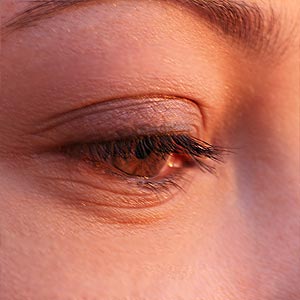Skin Exfoliation

Dirt, grime and dead cells go into making our skin dull and lackluster. The skin goes through a natural process of exfoliation. But it may be necessary to aid the skin exfoliation process to uncover smooth and glowing skin. Skin exfoliation promotes natural rejuvenation of the skin. With the right skin exfoliation process, you can look forward to smoother and more translucent skin.
Skin exfoliation
With regular facial exfoliation, there is reduction in visible lines on the skin. Since the cell renewal process is augmented, aging skin is benefited. The skin's capacity to absorb moisture is also enhanced. Effective skin exfoliation involves preserving the natural protective oils that are found on the top layer of the skin while lodging off dirt and dead cells. It must not disturb the collagen fibers found in the lower layers of the skin.
Do not forget your regular skin exfoliation routine during summer so that you can show off your smooth back in a summer dress. While heading for the beach, a good skin exfoliation will save you the embarrassment of rough heels and elbows, dry and ashy skin and dead skin. Your makeup looks better on clean skin. Regular skin exfoliation reduces dark spots and hyper pigmentation.
You can exfoliate your skin at home with a mild abrasive product such as loofah or soft washcloth. Try a face scrub, homemade exfoliating mask or buffing cream. Pumice soaps and loofahs are used to exfoliate skin on the rest of the body. Do not forget your back, neck, legs, knees and elbows when you exfoliate. An exfoliating cleanser and loofah are all you need - scrub them when in the shower and you can reveal younger-looking smoother skin. You can use body brushes or exfoliating gloves while giving your body an exfoliating experience.
Those with overly sensitive skin or suffer from a skin disorder must refrain from skin exfoliation. Dermatologists advice application of moisturizer after the skin exfoliation to prevent dehydration and calm the skin. While facial skin exfoliation can do wonders for dull and lifeless skin, overdoing it can lead to irritation and inflammation. Too much exfoliation can result in thinning of the skin's surface layer, thereby making it more vulnerable to bacteria and dirt.
Chemical skin exfoliation
Chemical skin exfoliation involves use of gels or lotions to exfoliate the epidermal layer of the skin. It is essential that the chemical skin exfoliating lotions contain the right pH so as to prevent excessive skin irritation. Chemical exfoliation of skin can be done with AHA (Alpha Hydroxy Acid), which is water soluble. Beta Hydroxy Acid or salicylic acid is also used to exfoliate skin.
AHA chemical exfoliation is best suited for skin that is sun-damaged. On the other hand, BHA chemical exfoliation is ideal for blemished skin. Other chemical exfoliating products such as glycolic acid, chemical peels and Retin-A have also been used to aid cell renewal and treatment of scarred or damaged skin. Microdermabrasion is another exfoliating process that is used on rough skin.
While manual exfoliators dislodge loose skin, chemical skin exfoliating products loosen the bonds between dead cells thereby getting rid of them. The hydroxy acids are more effective than physical exfoliants. They smoothen the skin by dissolving dead surface cells. Sometimes, there is burning of skin or irritation on exposure to light after chemical skin exfoliating treatment. It is essential to use a good sunscreen following the skin exfoliation process as the skin will be very sensitive to skin.
Skin exfoliation is recommended for skin problems such as acne, premature aging and hyper pigmentation. Acne-prone skin can be exfoliated with a masque-style exfoliator. Dry skin benefits from scrub-style exfoliating product to remove the dry and dead debris. Pigmented skin can be treated with the right skin exfoliation process to even out the pigmented surface cells.
Top of the Page: Skin Exfoliation
Tags:#skin exfoliation
 Beauty
Beauty Facial Skin Care
Skin Care Essentials
Men's Skin Care
Beauty Control - Sunscreen
Sunburn Remedies
Natural Sunblock
Beauty Care Routine
Skincare Tips for Teens
Dry Skin Care
Asian Skin Care
Black Skin Care
Pregnancy Skin Care Tips
Oily Skin Care
Skincare For Aging Skin
Common Skin Problems
 Crow's Feet
Crow's Feet Hyperpigmentation
Melasma
Acne during Pregnancy
Back and Chest Acne
Adult Acne in Women
Excessive Sweating
Whiteheads
Cause Dark Eye Circle
Chapped Lips
Age Spot
Skin Cancer Symptom
Skin Care Treatments
 Chemical Skin Peels
Chemical Skin Peels Radio Frequency Skin Tightening
Electroporation Beauty Treatment
Home Remedies for Large Pores
Dermaplaning Benefits
Manuka Oil Benefits
Skin Needling
Cheek Fillers
Cosmetic Dermal Filler
Skin Lightening
Skin Exfoliation
Bamboo Massage
Dry Skin Brushing
Stretch Mark Removal
Freckle Removal
Rosacea Treatment
Skin Care Routine
Tretinoin Cream Benefits
Alpha Hydroxy Acid
Homemade Face Mask
Bath Salt Recipe
Tea Tree Oil
Wrinkle Cream
Almond oil Benefits
Jojoba Oil
Handmade Soap
Eye Creams
Facial Cleanser
Botox Cosmetic
Benefit of Aloe Vera
Shea Butter Benefit
Top of the Page: Skin Exfoliation
Popularity Index: 100,836

